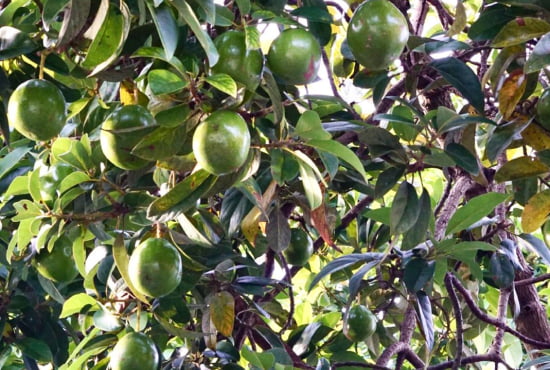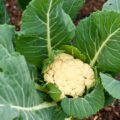An Introduction to Avocados
The avocado tree, also known as the alligator pear tree, originated in Mexico and was cultivated by the Aztecs. The tree is evergreen with thick, leathery leaves and produces perfect white, ivory to yellow flowers that blossom throughout the year. The fruit has a large seed or pit and comes in many different varieties, such as ancho chile, bacon, etc., which all have slightly different appearances and flavors. Its uses are widespread and can be enjoyed in salads, sandwiches, and even desserts!
40-45 cm long, 20-25 cm across. It is pear-shaped with a pointed end and contains a single large seed (pit). The skin is thick, leathery, dark green, and bumpy. Inside is cream-colored with an abundance of small black seeds arranged in two spirals. Most avocado varieties have skins that turn brown when they are exposed to air; as long as it’s not too soft or mushy it can still be used in cooking though.

History of the avocado
The avocado (Persea Americana) was first cultivated by natives of Mexico, and is now a common fruit in other parts of South America, in Hawaii, Southern California, and Florida. Botanically, it is categorized as a berry rather than a true nut. The word avocado comes from Nahuatl and means testicle, perhaps because of its phallic shape. Avocados were introduced into Florida from Mexico around 1833; commercial cultivation there began shortly after 1900. Today, approximately 2 billion pounds of avocados are produced annually worldwide.
Nutrition benefits of avocados
Studies have shown that eating avocados can lower LDL (or bad) cholesterol and decrease triglycerides by as much as 15 percent. Fat-burning antioxidants lutein and zeaxanthin are also found in abundance in avocado, which gives your skin a brighter tone and improves vision. The monounsaturated fats also help with weight loss by keeping you feeling full longer and reducing food cravings.

Why eat avocados?
Avocados are high in fat, but that’s good for you. (It’s about monounsaturated fat, and avocados contain more of it than most other fruits.) The best part: They’re also low in sugar. There are few things as satisfying as a whole avocado with nothing else on it except maybe salt, pepper, and lime juice or vinaigrette, says Elisa Zied, R.D., author of Younger Next Week. Zied notes that because avocados are so rich in nutrients—including fiber and vitamins C and E—your body can absorb them easily, which leads to your brain sensing that you’re full sooner rather than later.
Amazing facts about avocados
While avocados are technically fruit, they’re considered to be a vegetable because of their savory flavor. They’re also a great source of potassium, which supports normal heart function and muscle contraction. Just one avocado contains 16% of your daily recommended intake for potassium. But that’s not all! Avocados are also good sources of monounsaturated fat, vitamin C, and vitamin K
as well as beta-sitosterol, lutein, and zeaxanthin—all nutrients essential for health that our bodies can’t produce on their own. Given these benefits, it makes sense why they make an appearance in traditional Mexican dishes like guacamole and chile Rellenos. With healthy fats and loads of nutrients, it seems there is much more to love about avocados than you may have thought.

Growing an avocado tree
Due to their tropical nature, avocados need a lot of heat and humidity to thrive. It’s, therefore, best for avocado plants to be grown in a container that can be moved indoors during colder months and outdoors when warmer weather arrives. In addition, it’s important not to overwater avocado trees—they need adequate drainage—and excessive watering causes root rot.
The roots should also be kept above ground, so planting your avocado tree directly into the ground is not recommended. To keep young trees protected, you may want to consider placing large planters around them. Also, remember that mature avocado trees will eventually get quite tall; if planted outside, ensure they have plenty of room or else you risk damaging them by pruning off lower branches or trunks to keep things from getting too crowded. But again, growing an avocado tree does require a little effort on your part but will pay off once you enjoy its delicious fruit!
However
For centuries, Native Americans in Mexico grew and used avocados. They were so important to their diet that it is thought they were what allowed them to build such a high population and be successful hunters. While we don’t have any proof of these claims, we do know that our favorite fruit was first cultivated by people thousands of years ago in Central America. And it didn’t just come from there: experts believe it may have been domesticated in many different places at different times. Today, however, almost all avocados grown are descended from those original Central American ones.

